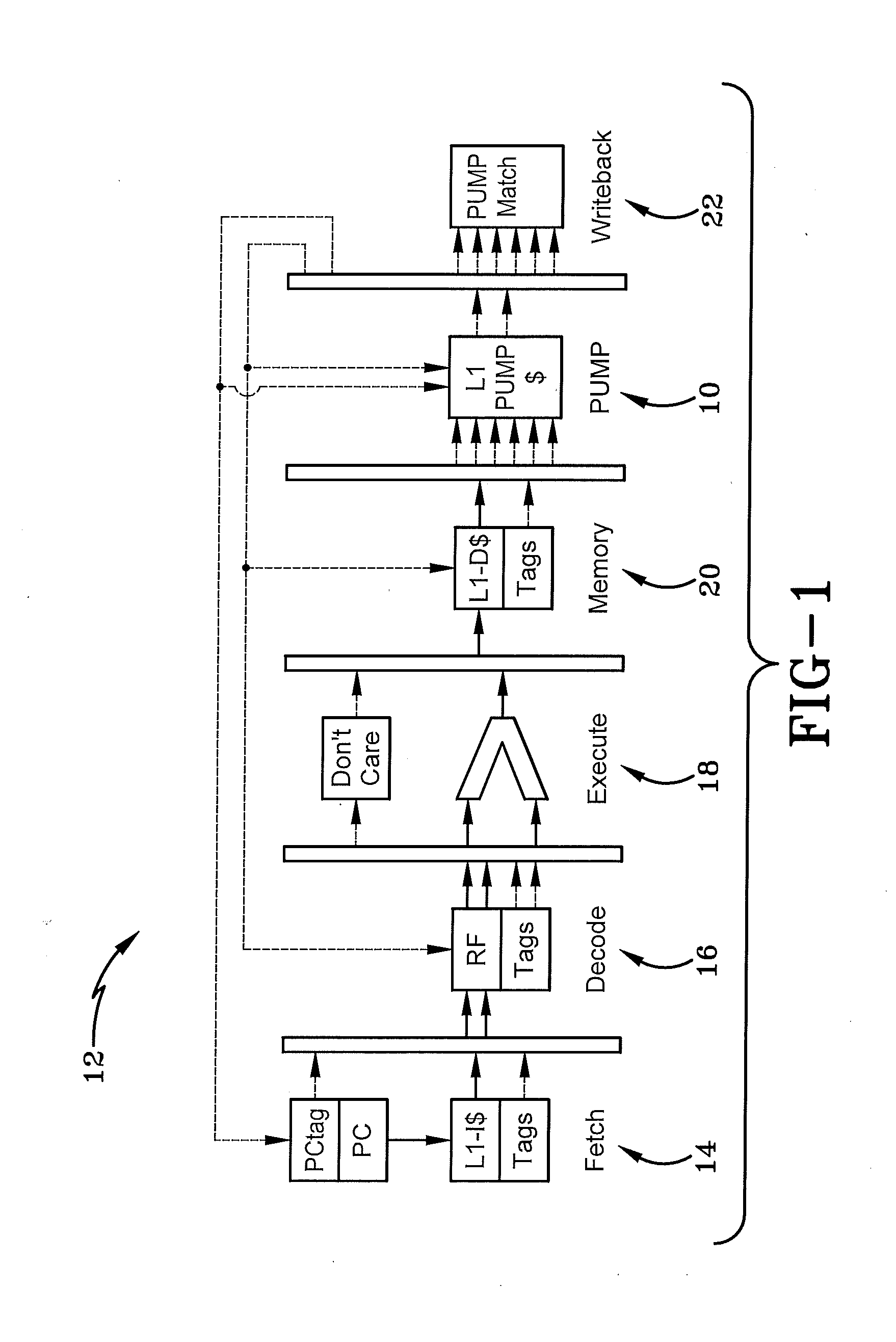Programmable unit for metadata processing
a programable unit and metadata technology, applied in the field of data processing, can solve the problems of reducing the effective capacity of rule caches, reducing the number of unique rules, and reducing the number of compulsory misses
- Summary
- Abstract
- Description
- Claims
- Application Information
AI Technical Summary
Benefits of technology
Problems solved by technology
Method used
Image
Examples
Embodiment Construction
[0062]As depicted in FIG. 1, a Programmable Unit for Metadata Processing (PUMP) 10 is integrated into a conventional Reduced Instruction Set Computing or Computer (RISC) processor 12 with an in-order implementation and a 5-stage pipeline suitable for energy-conscious applications, which effectively transforms into a 6-stage pipeline with the addition of PUMP 10. A first stage is a fetch stage 14, a second stage is a decode stage 16, a third stage is an execute stage 18, a fourth stage is a memory stage 20, and a fifth stage is a writeback stage 22. Pump 10 is interposed between the memory stage 20 and the writeback stage 22.
[0063]The PUMP 10 is electronic logic that is a mechanism that provides policy enforcement and metadata propagation. PUMP 10 is characterized by and allows the following to occur: (i) an empirical evaluation of the runtime, energy, power ceiling, and area impacts of a simple implementation of the PUMP 10 on a standard set of benchmarks under four diverse policies...
PUM
 Login to View More
Login to View More Abstract
Description
Claims
Application Information
 Login to View More
Login to View More - R&D
- Intellectual Property
- Life Sciences
- Materials
- Tech Scout
- Unparalleled Data Quality
- Higher Quality Content
- 60% Fewer Hallucinations
Browse by: Latest US Patents, China's latest patents, Technical Efficacy Thesaurus, Application Domain, Technology Topic, Popular Technical Reports.
© 2025 PatSnap. All rights reserved.Legal|Privacy policy|Modern Slavery Act Transparency Statement|Sitemap|About US| Contact US: help@patsnap.com



